Other DWP Power Historical Photos
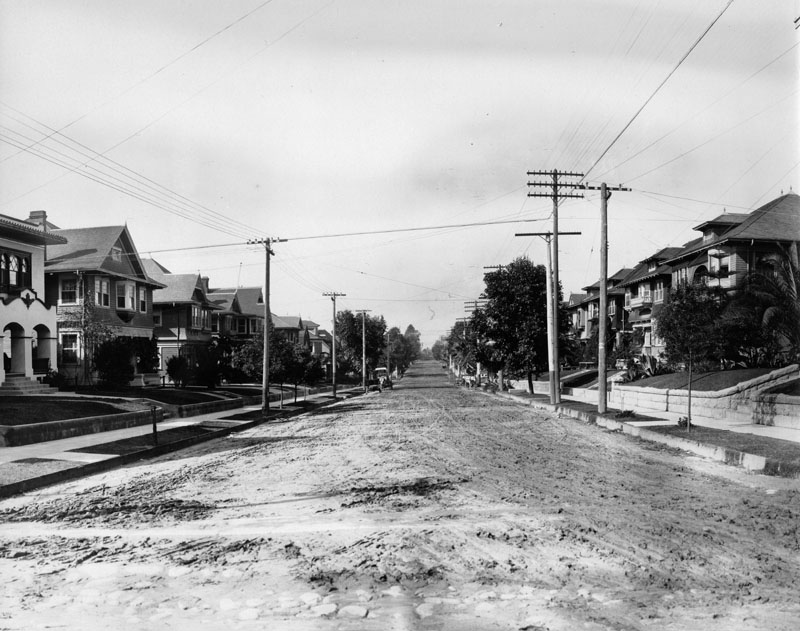 |
|
| (1907)* - Utility poles and two story, wooden-frame houses line Ingraham Street looking west from Lucas Avenue. An early model automobile is parked in front of a horse and buggy. The street is still unpaved. |
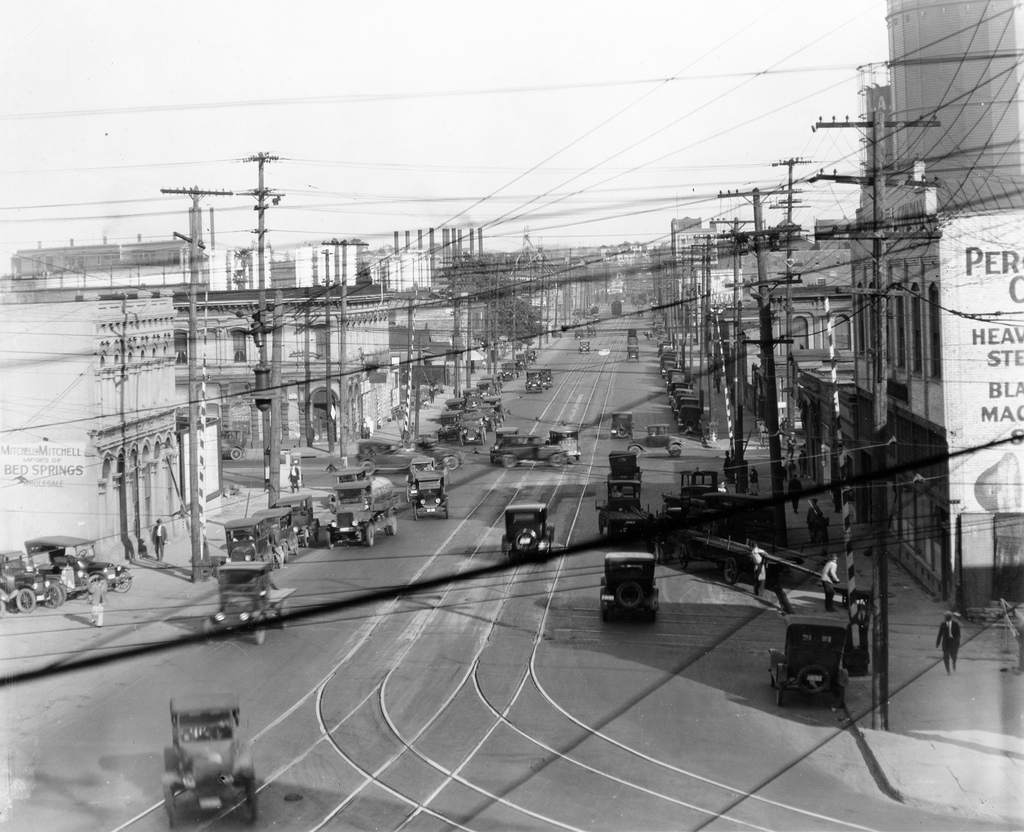 |
|
| (ca. 1925)^ - This photograph depicts a view of Aliso Street looking East where Pacific Electric Railway Company tracks turn onto the thoroughfare from San Pedro Street. The one thing that stands out is the overhead distribution line congestion that is prevalent throughout. |
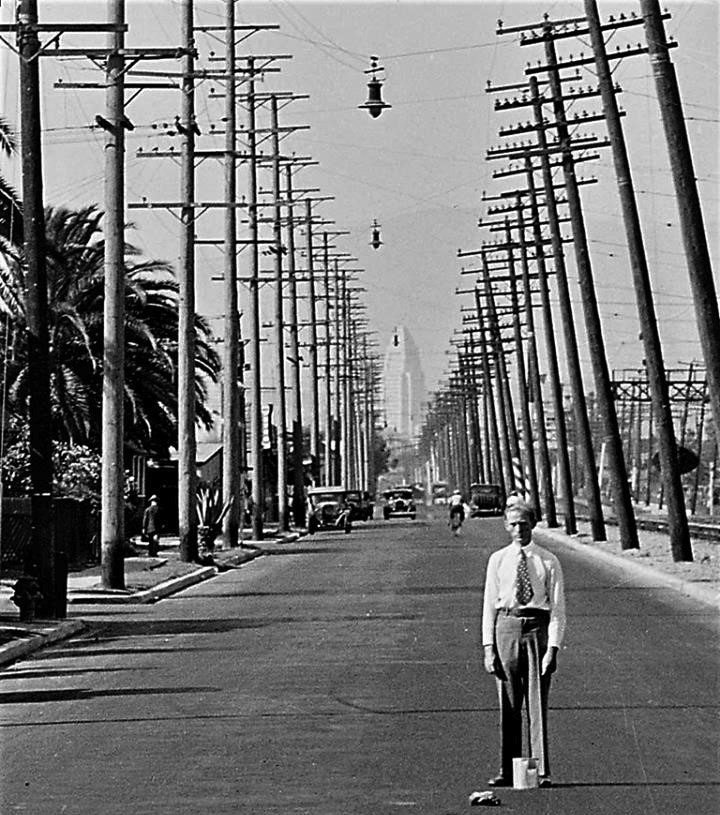 |
|
| (1929)^x^ – View looking north on Long Beach Ave at 42nd Street, showing a very serious looking man standing in the middle of the road. Overhead lines run up and down both sides of the street (power lines on the left and telephone lines on the right). Overhead utilitarian streetlights straddle the street between the lines. Railroad tracks are on the right and City Hall (built in 1928) can be seen in the distance. Click HERE to see contemporary view. |
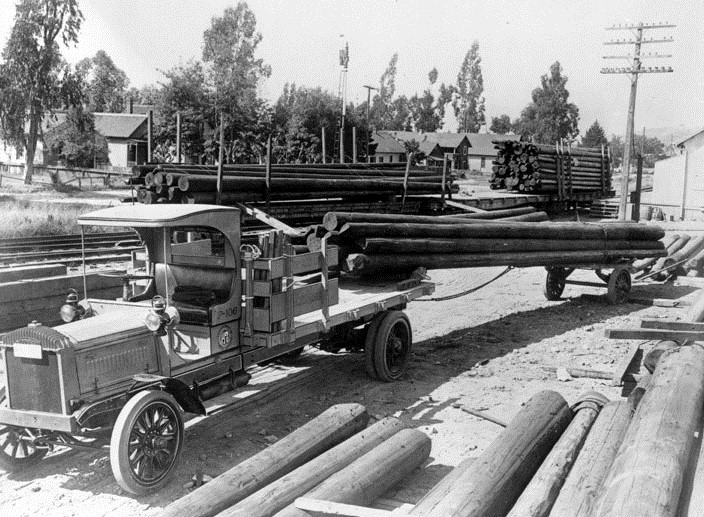 |
|
| (1920s)* - Early view of a Bureau of Power and Light truck used for transporting power poles. A railroad car full of poles can be seen in the background. |
Click HERE to see more in Early Power Distribution |
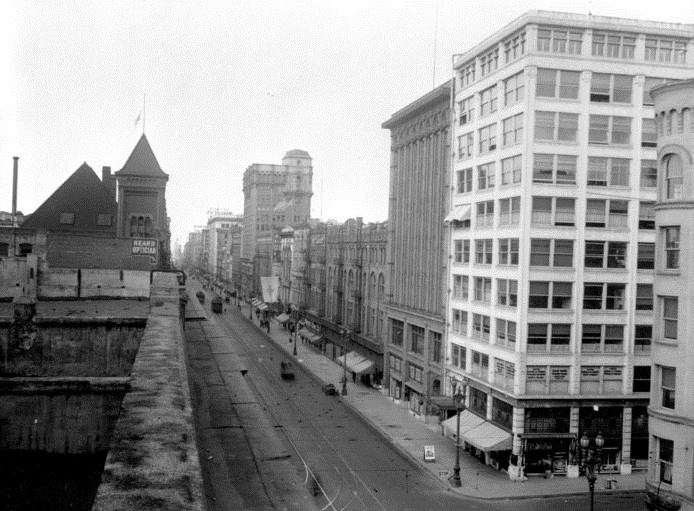 |
|
| (Early 1920s)* - 207 South Broadway - When the Merchants Trust Company Building at 207 S. Broadway was purchased in 1921, it appeared the Department had, at last, a home that would adequately accommodate it for many, many years. However, growth continued at such a pace it necessitated new additions and expansions in Department facilities much earlier than anyone ever expected. Within four years after purchasing the Broadway Building, the Department found itself adding facilities and erecting more office quarters. |
Historical Notes In 1902 the City of Los Angeles took over by purchase the old Los Angeles City Water Company and inherited the company's offices in what had been a furniture factory at Alameda and Marchessault streets (now Sunset Boulevard) across from the Plaza. Soon the municipal Water Department outgrew the little-brick building, and the search began for larger quarters. Over the years, the Water Department (later DWP) moved a multiude of times to both existing and new bulidings.** |
.jpg) |
|
| (1930s)* - 207 South Broadway - corner of Broadway and Second Street. |
Click HERE to see more in Construction of the GOB |
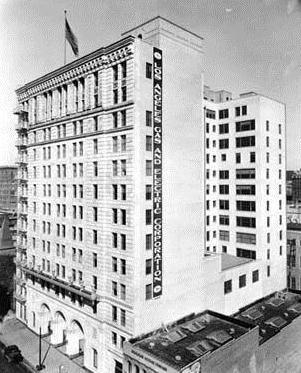 |
Exterior of L.A. Gas and Electric Building with sign prominent.
In December of 1936 Los Angeles City voters approved a charter amendment authorizing the Bureau of Power and Light to issue revenue bonds in the amount of $46 million and purchase the electrical system of Los Angeles Gas and Electric Corporation. At that time, it was the last remaining privately owned system in LA.
|
| (ca. 1920)* - LA Gas and Electric Corporation Building |
Click HERE to read more about the City's purchase of the Los Angeles Gas and Electric Co. |
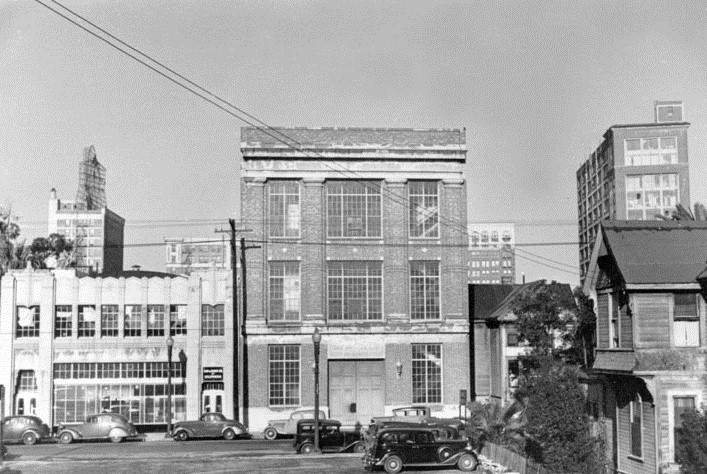 |
|
| (1937)** - LA Gas and Electric Corporation station. |
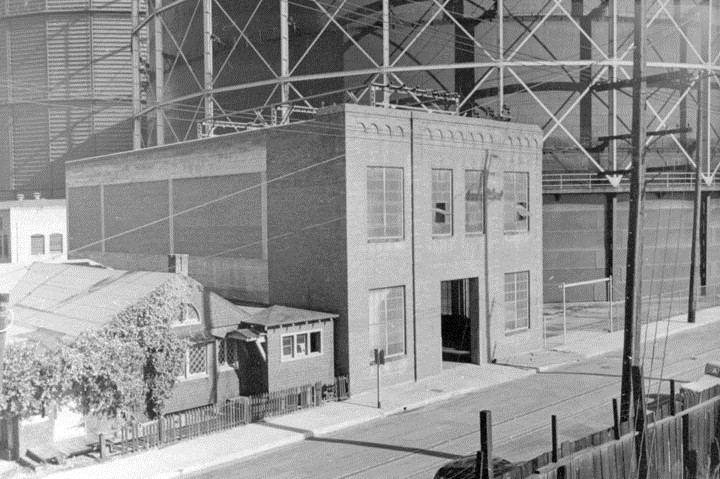 |
|
| (1937)* - LA Gas and Electric Corporation Station. |
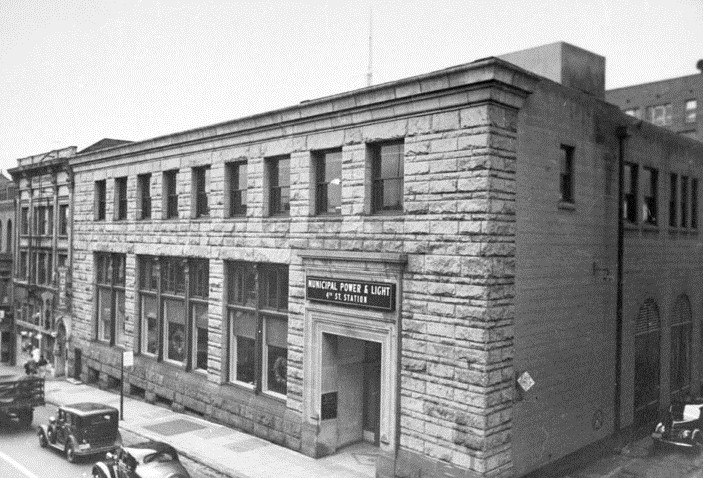 |
|
| (1937)** - In 1937, exactly at midnight on the last day of January, the Bureau of Power and Light took possession of the electric system formerly owned by the Los Angeles Gas and Electric Corporation. The above station location on 4th Street was one of the many stations taken over by the Bureau. |
Click HERE to see more in Early Power Distribution Stations |
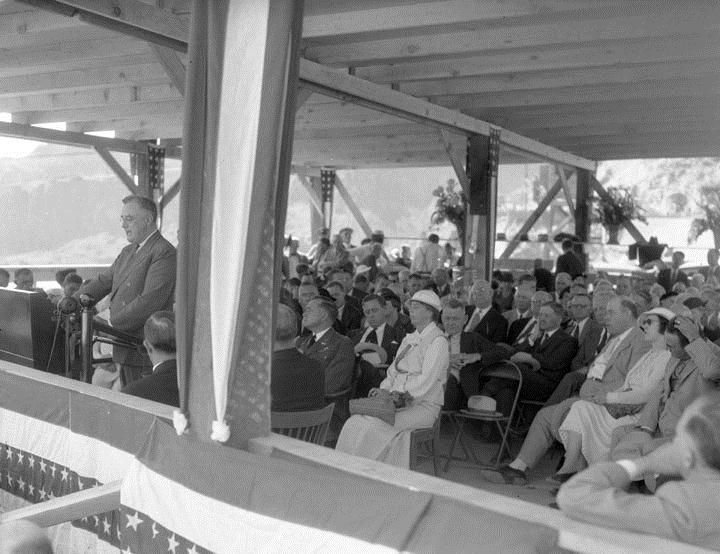 |
|
| (September 30, 1935)* - Dedication of Hoover Dam by President F. D. Roosevelt. Ezra Scattergood can be seen in the lower right behind the chair with the hat. |
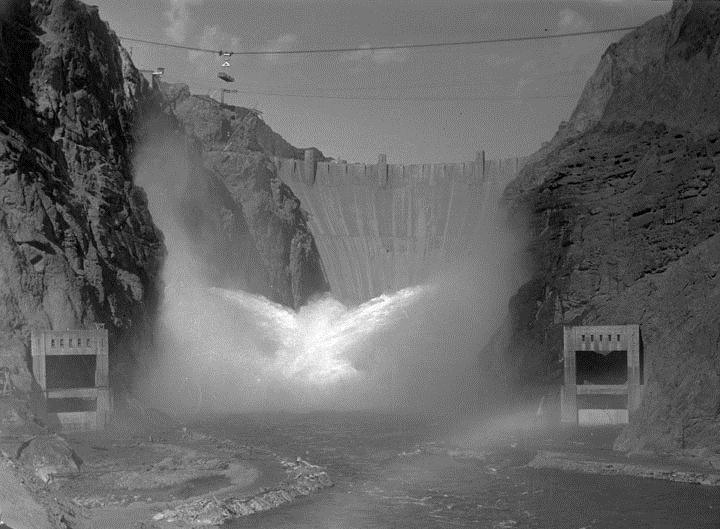 |
|
| (1936)* - View of the first time 12 valves in canyon wall outlet works were simultaneously discharging Colorado River water. In the future the valves will be used only in emergencies, the tremendous power of the falling waters being carried by huge steel penstocks to turn the turbine wheels of fifteen 115,000 horsepower generators such as those shown in inset. On October 9 the second generator in this row flashed to Los Angeles the Power Bureau’s first allotment of Boulder power. |
Click HERE to see more in Construction of Hoover Dam |
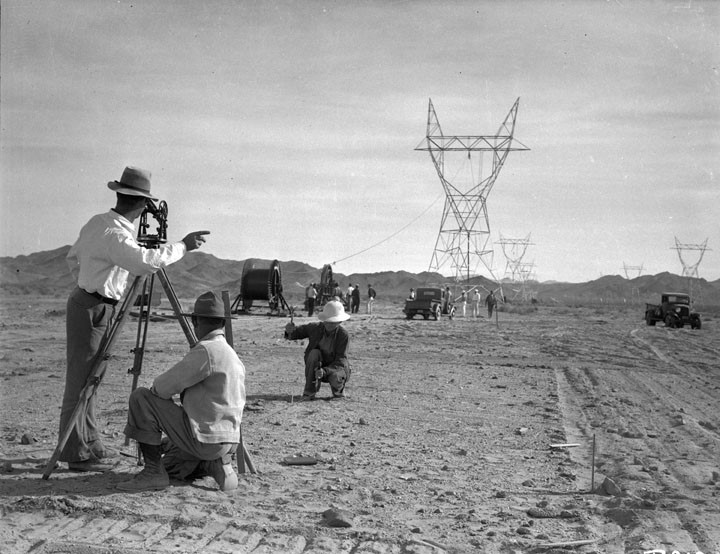 |
|
| (1934)* - Site of Silver Lake switching station with surveyors laying out construction lines. This station and one at Victorville divided the 270-mile power line from Hoover Dam to Los Angeles into three sections for efficiency of operations. |
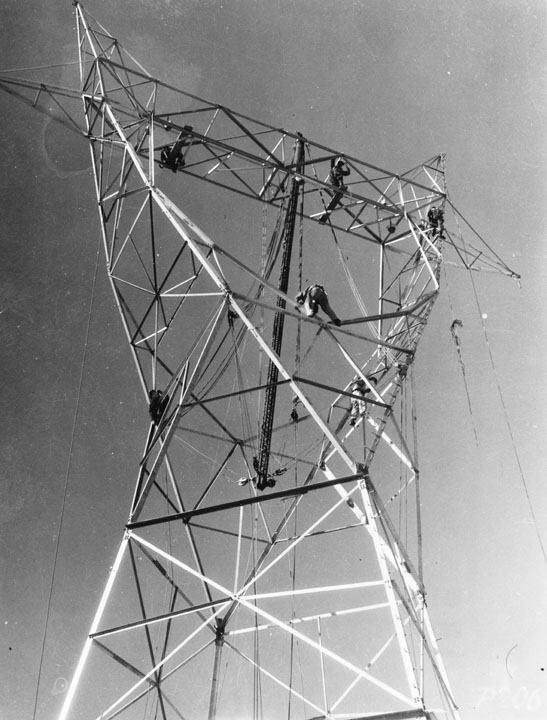 |
|
| (1935)* - Close-up view showing a crew erecting one of the Boulder transmission towers. |
Click HERE to see more in Early Power Transmission |
.jpg) |
|
| (1936)^^ - Interior view showing the spacious and well-lit control room at RS-B, which controlled the power flow from Hoover Dam to Los Angeles. |
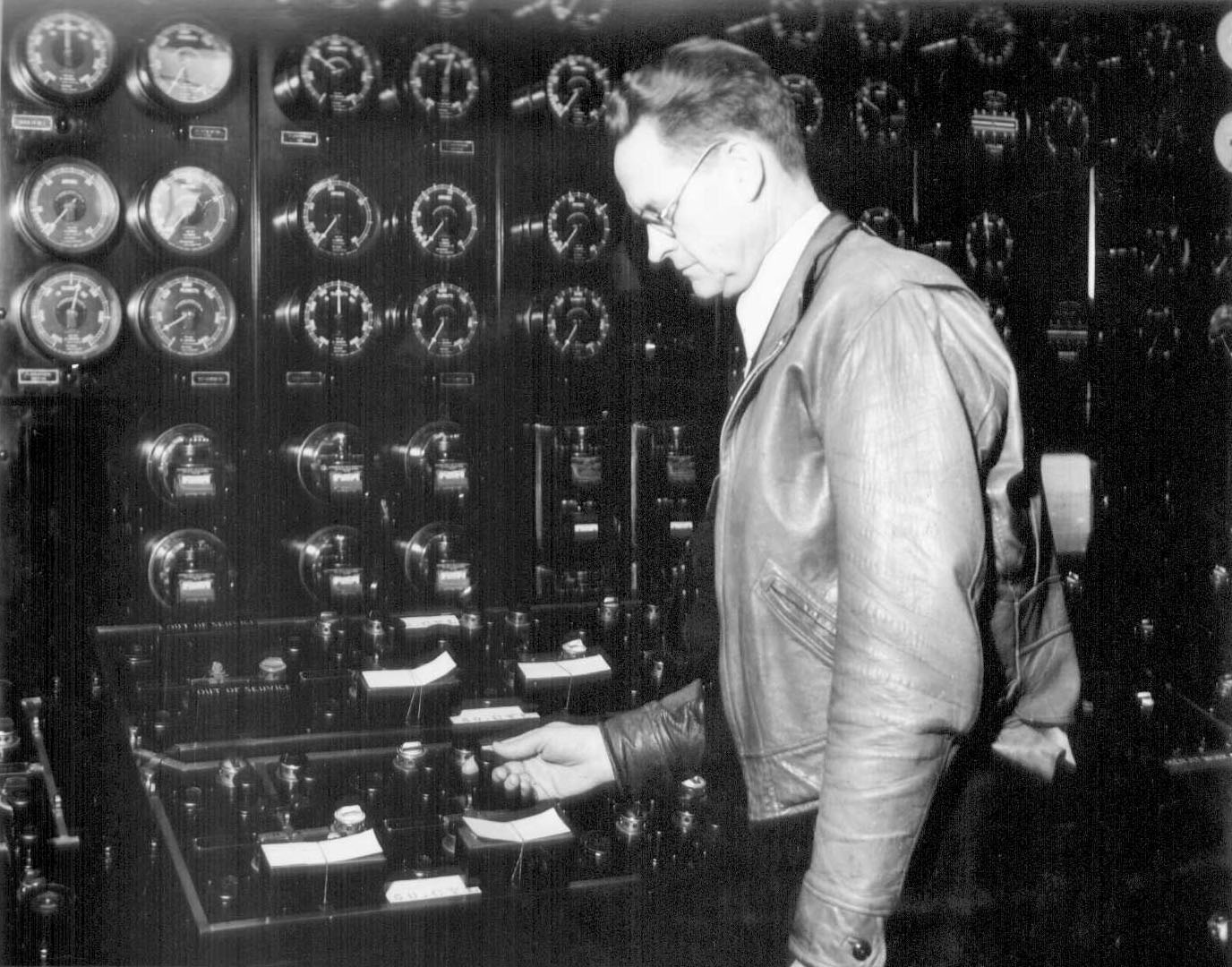 |
|
| (ca. 1936)^^ - J. A. Griffitts opening the circuit breaker on the last DWP 50 cycle circuit. Taken in the old control house at RS-C. |
Historical Notes Prior to 1936, the Southland was sort of an electrical enclave. Both Edison and Los Angeles Bureau of Power and Light generated and distributed their power at 50hz where most parts of the country were at 60hz. Some electrical appliances worked at both frequencies, but for frequency-sensitive products manufacturers created special 50hz models just for the Southern California market. And when newcomers moved from outside the region, they paid to have their old devices converted, or simply bought new ones that would work on the 50hz grid. In 1936, in order to accept power from Hoover Dam's 60hz generators, the Los Angeles Bureau of Power and Light converted its entire system from 50 to 60hz. It would take Southern California Edison another 12 years (1948) before they would also convert to 60hz.*^ |
Click HERE to see more in Early Power Substations |
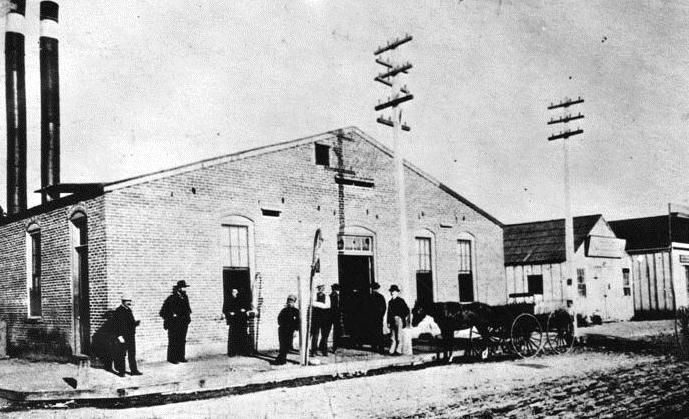 |
|
| (1888)* - Banning Street Electrical Plant -- The first electric light plant in Los Angeles was built in 1882 by Charles L. Howland on the corner of Alameda and Banning Streets (In 1883, Howland and others formed the Los Angeles Electric Company). |
Historical Notes The Banning Street Electrical Plant provided power mostly to streetlights and the new electric railways that were proliferating throughout the Southland in the late 1880s. |
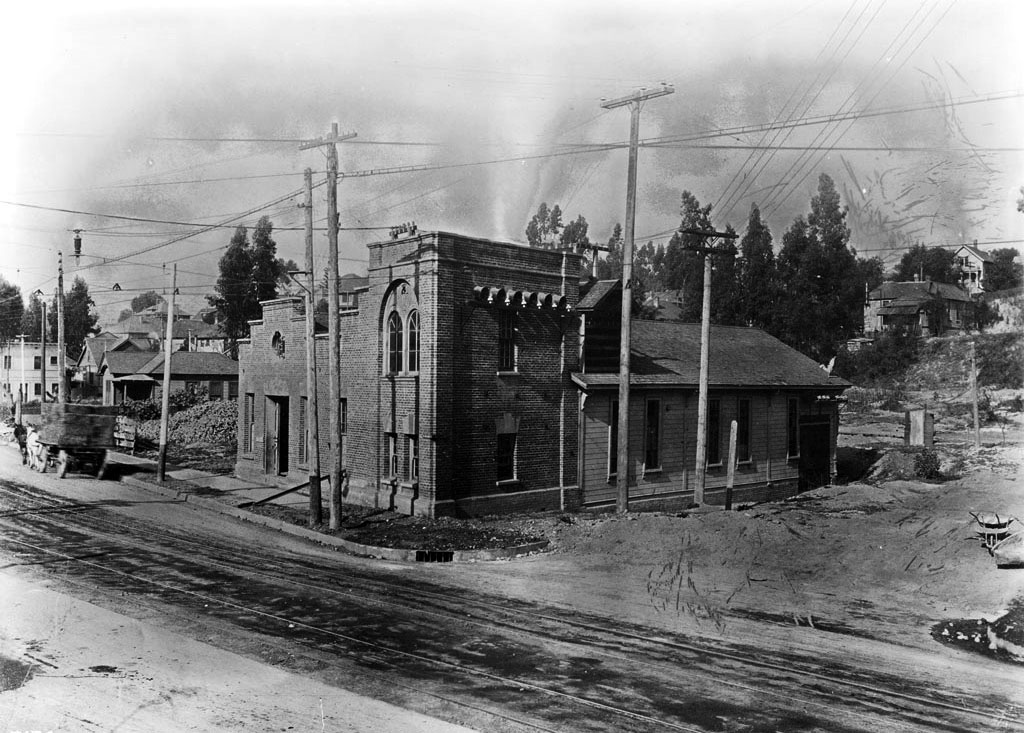 |
|
| (ca. 1905)^* - View showing the Second Street Railroad Power Station (aka Steam Plant No. 1) on the northwest corner of 2nd and Boylston streets. The two-story brick utility building stands next to a cleared lot in front of an unpaved road in which streetcar rails can be seen, surrounded by utility poles. |
Historical Notes Between 1897 and 1906 the power house at the Boylstoon Yard was in use as Edison Electric Company Steam Plant No. 1. This was Edison's first power plant located in the City of Los Angeles. |
Click HERE to see more in Early Power Generation |
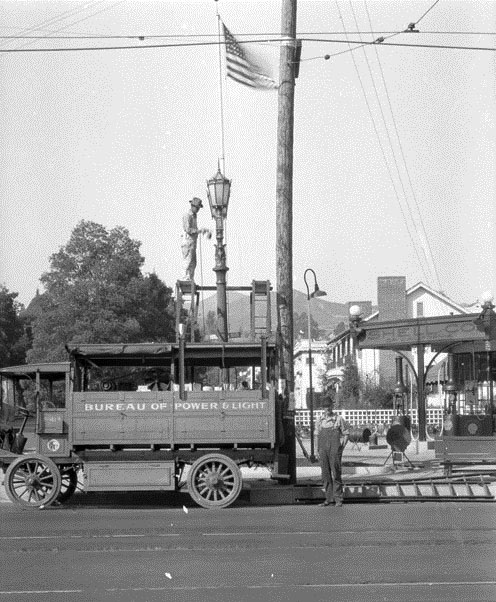 |
|
| (Early 1920s)* - Bureau of Power and Light crew working on an ornamental street light. |
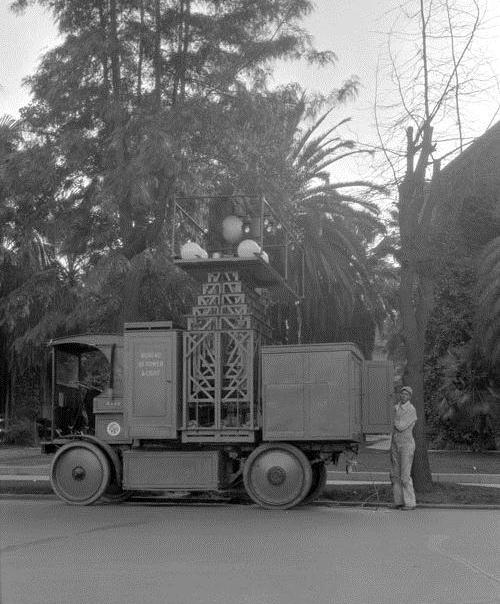 |
|
| (Early 1920s)* - An electric powered street light truck used by the Bureau of Power and Light in the 1920s. |
Historical Notes Bureau of Power and Light is the forerunner to today's Los Angeles Department of Water and Power (DWP). The municipal utility has had six different names since it was established in 1902. Click HERE to see DWP name change chronology. |
Click HERE to see more in Early Los Angeles Streetlights |
* * * * * |
History of Water and Electricity in Los Angeles
More Historical Early Views
Newest Additions
Early LA Buildings and City Views
* * * * * |
References and Credits
* DWP - LA Public Library Image Archive
^Metro Transportation Library and Archive
^^DWP - Water and Power Associates Historical Archives - Courtesy of Rex Atwell
*^Southland.Gizmodo.com: LA's Power Grid
^x^Facebook.com: So. Calif. Historic Arrchitecture
< Back
Menu
- Home
- Mission
- Museum
- Mulholland Service Award
- Major Efforts
- Board Officers and Directors
- Positions on Owens Valley and the City of Los Angeles Issues
- Legislative Positions on
Water Issues
- Legislative Positions on
Energy Issues
- Recent Newsletters
- Historical Op Ed Pieces
- Membership
- Contact Us
- Search Index